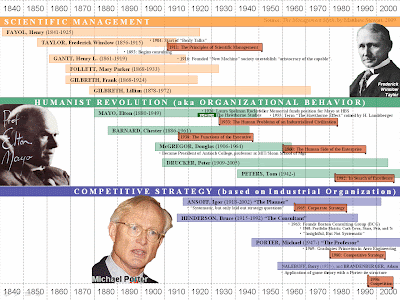Training is a huge topic in management for many reasons, but the two that our group focused on in our discussions were: - Training integrates all the other management topics we've discussed so far, and some we haven't covered yet-- planning, time management, organization, decision-making, management style. In order to do it well, we as managers must pull from a wide set of skills.
- If training is done well, it can be almost 'invisible' -- sometimes the 'students' don't even realize that they were being 'trained'! Smooth operations and lack of problems are the hallmarks of a well-trained staff. However, a poorly trained staff can start off with small problems that can quickly magnify and multiply into major ones.
Most people who plan training, or who have been 'trained' at some point, have had a wide range of experiences with the process, or as Amy put it, "the good, the bad and the ugly." Included below are a few experiences from group members, the first two focusing on positive training experiences, and the final showing a range:
from Kathleen:
"My most recent experience of training was when I started a new grad assistantship at the USC med school library this fall. Besides having a day of "orientation" where we were taught all the necessary skills, my boss stayed on with all the new GAs and helped us work until we felt comfortable doing our jobs and answering any questions that might come up. She reassured us that she would work alongside us for as long as it took for us to be comfortable, and having her there was a great way to learn the job, because the most important part of what we do is learned through experience, not specific skills."
from Katherine: "I work in the Circulation department at Thomas Cooper Library, and all of our student workers have their own "training folders." This, along with quizzes set up on our departmental Blackboard site, help to ensure that any gaps in training are covered."
from Amy:
The Good
The small local branch of the public library devoted 3 weeks to my training, as a part-time technician, which was outlined on a simple table with check boxes. I was told to ask as many questions as I wanted from any members of the small staff and they were ALL open and gracious, to a T (T for training).
Then, the senior part-time technician met with me 3 days in a row to go over the basics. Following that, we met twice a week for questions which I wrote down as they occurred during my work day when she wasn't there. During this whole time I was doing whatever I already understood (the easy stuff requiring only 2 or 3 steps), practicing and self-training on the more complex tasks and getting help from others in the workroom.
At the end of 2 months, I reviewed the procedures I had learned with the branch supervisor, using the original check-list. I felt confident in my capabilities, as did she.
The reason this training method was effective is because I was able to explore and learn at my own pace based upon a task-focused "schedule", receive feedback during and after my learning on a regular basis, and keep an organized running list of what I had accomplished.
The Bad
The central branch of the public library assigned me a "mentor" who wasn't interested in being one and told me so. She was not comfortable with a teaching role and spent most of our time together showing me the "shortcuts" which weren't policy. I'm not a stickler for rules by any stretch of the imagination, but I never felt that I got the foundational basics necessary before riffing off the (efficient and sensible) shortcuts.
At the end of 2 weeks, the supervisor went over a list of standard procedures I should know, and understand the reasons behind, and rated me on them. When I explained that I didn't understand the procedural reasoning because I had been shown mainly the shortcuts without policy explanations, she questioned my honesty.
The Ugly
A city management office where I was "transitioned" to, during budget cut-backs in the library, was a completely learn-as-I-went experience. This had a lot of benefits in that I could make up my own procedures and priorities. I was able to explore everything and anything I wanted. The only job review or feedback I received was reprimand in nature, when the division head felt I was rude to customers on the phone as he was walking by my desk.
I was told the Admin Asst show me my tasks and answer all my questions. This person, however, directed me to the former Office Assistant's files to look for direction. On occasion, the Admin Asst would ask me to do something for her and show me how to do it, uncertain of the reasons behind the procedures. However, open to my efficiency suggestions, many procedures were changed.
After 2 months, I was performing duties far beyond the city job description and slowly taking over many of the Administrative Assistant's duties, before I finally realized there wasn't a set of tenets regarding my assigned duties. I had almost no communication from the division head, despite my attempts. I only received a job performance review upon my inquiry; it was positive and 1 year over the city-mandated deadline.
I ended up designing a webpage for our division out of self-initiative which led to the dept. head, located across town, asking me to take over the whole dept. website (a BIG job). Eighteen months later, the dept. head, identified that who my supervisor was had never been clarified to me, in front of my division's supervisor. Both my division's supervisor and the Admin Asst to whom he had re-directed training responsibility and de facto my supervision, became vocally hostile towards me from that point forward. I resigned once the website job was completed.
























